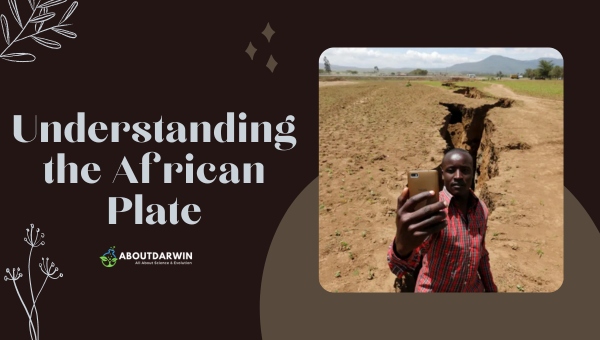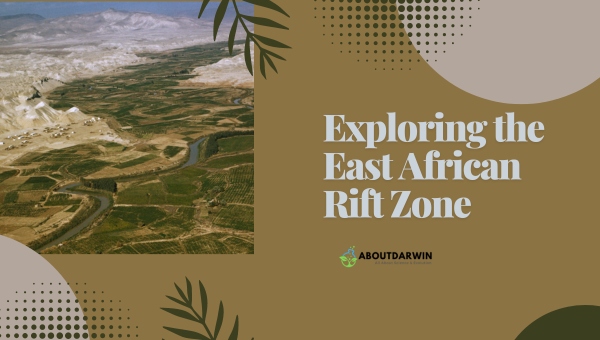Physical Address
304 North Cardinal St.
Dorchester Center, MA 02124
In geology, the African Plate and the East African Rift Zone play crucial roles in shaping our planet’s landscape. The African Plate, a major tectonic plate covering the continent along with some surrounding oceans, drives the complex process of plate tectonics.
The interaction of these plates gives rise to the formation of the East African Rift Zone, an impressive geologic feature spanning from Ethiopia to Mozambique.
Diving deeper into this fascinating geologic phenomenon, I’ll explore how the African Plate interacts with its neighboring plates and the processes that lead to the development of the East African Rift Zone. This region, home to vast lakes and tectonically-driven volcanic activity, offers a wealth of scientific knowledge and a glimpse into the future of Earth’s continental arrangements.
To understand the remarkable forces that have shaped the African continent and the planet as a whole, it’s crucial to study the intricate movements and interactions of the African Plate and the formation of the East African Rift Zone. So, let’s embark on this journey together and discover the secrets that lie in the depths of our Earth’s crust.
When it comes to Earth’s tectonic plates, the African Plate stands out prominently. As a geologically complex region, geoscientists and students alike need to understand its characteristics and movements.

The African Plate is one of the major tectonic plates covering a vast expanse of land. It includes the African continent as well as the surrounding ocean crust. This plate is approximately 61 million square kilometers, making it the second-largest continental plate next to the Eurasian Plate. Notably, it’s moving at about 2.15 cm per year.
| Plate | Size (Square kilometers) | Speed (cm/year) |
|---|---|---|
| African Plate | 61,000,000 | 2.15 |
| Eurasian Plate | 67,800,000 | – |
An intriguing aspect of the African Plate is its connection to the East African Rift Zone. This rift zone is a series of cracks in the Earth’s surface, extending more than 3,000 miles from the Afar Triple Junction in northeast Africa, southward through eastern Africa, ending in Mozambique. Here’s a breakdown of the three main arms of the rift:
These rifts result from immense geological forces acting on the tectonic plates, causing the gradual separation of the African Plate. In the future, the eastern portion of Africa will likely split away, forming a new plate called the Somali Plate.
It’s also vital to understand the types of boundary movements within the African Plate. Two main types of boundaries occur within this plate: divergent boundaries and convergent boundaries.
Considering these factors, it’s evident that the African Plate and the East African Rift Zone provide invaluable insights into the dynamic world of plate tectonics. By thoroughly understanding the complexities of this tectonic plate and its associated rift zones, geoscientists can better predict and respond to geological events in the region.
The East African Rift Zone is a fascinating geological feature that stretches over 3,000 miles from the Red Sea to Mozambique. It’s made up of two branches – the Eastern Branch and the Western Branch – caused by the splitting of the African Plate.

As I venture into this vast geographical phenomenon, I discover that it’s particularly famous for its unique landscapes, including huge rift valleys, volcanic mountains, and geothermal energy sources. Lying within the East African Rift Zone is the world-renowned Great Rift Valley and many national parks, each providing diverse habitats for various wildlife species.
Some of the most significant features within the East African Rift Zone include:
Throughout my exploration, I also learned about the fascinating geological process that formed the rift zone. It began millions of years ago when the massive African Plate started pulling apart, creating a rift valley. The process continues today and will likely continue for millions of years, progressively widening the rift zone and potentially forming a new ocean basin.
In addition to its geological significance, the East African Rift Zone is an essential region for studying human evolution. The rift’s unique landscapes provide a treasure trove of fossils and archaeological sites, revealing the history of early human ancestors. Some of the most critical discoveries include:
As someone interested in wildlife and biodiversity, I’m delighted to discover the unique ecosystems that the East African Rift Zone supports. It hosts many endemic species, thanks to the various climates and habitats within the rift.
National parks and reserves, such as the Virunga National Park, Serengeti National Park, and Ngorongoro Conservation Area, are home to a wide variety of plant, bird, and mammal species, making it a natural wonder for biologists and nature enthusiasts alike.
Exploring the East African Rift Zone offers an incredible opportunity to witness a fascinating geological process and observe various natural habitats while gaining a deeper understanding of human history and evolution.
The African Plate and the East African Rift Zone are crucial to understanding the geological and geographical phenomena occurring in eastern Africa. Studying these tectonic forces offers valuable insights on a range of topics, including natural resources, biodiversity, and potential natural disasters. Let’s recap some key takeaways:
By delving deeper into the complexities of the African Plate and the East African Rift Zone, I hope to shed light on the geological phenomena shaping Eastern Africa. As our understanding of these forces evolves, so too will our ability to predict and prepare for potential changes, ensuring the safety and prosperity of the region and its inhabitants.